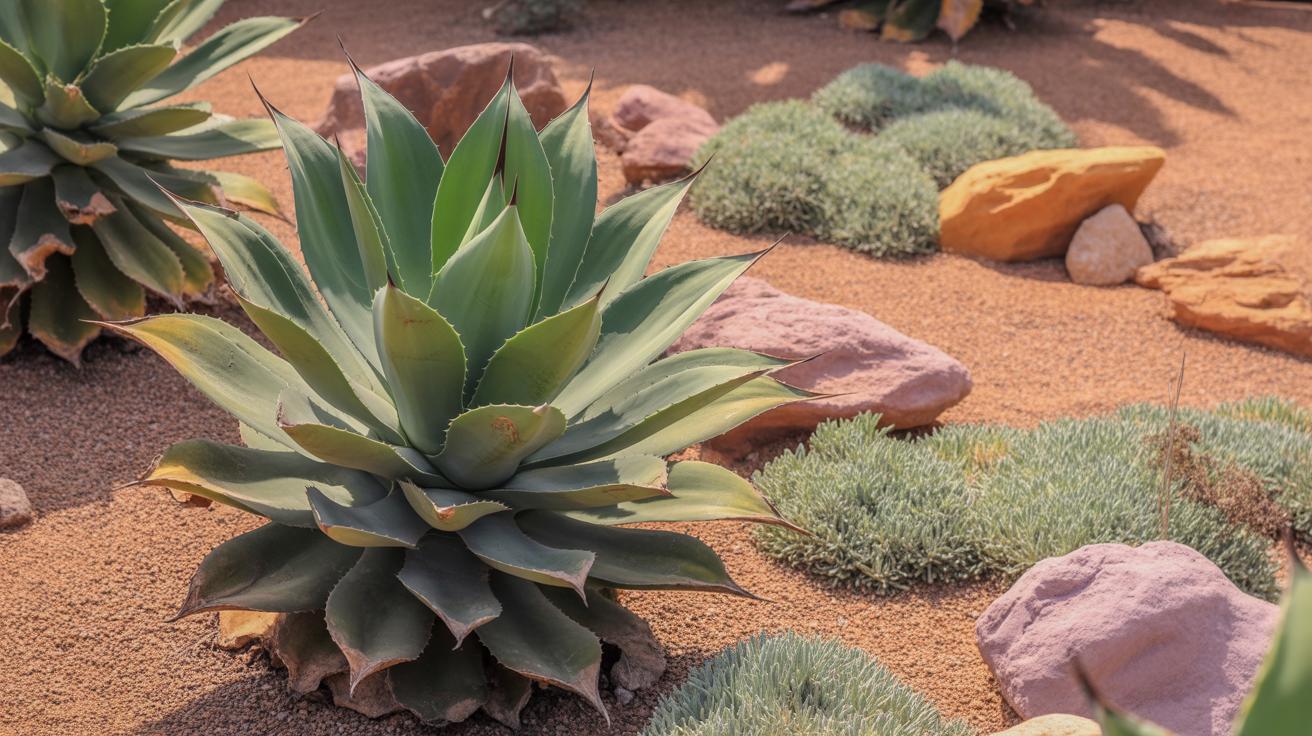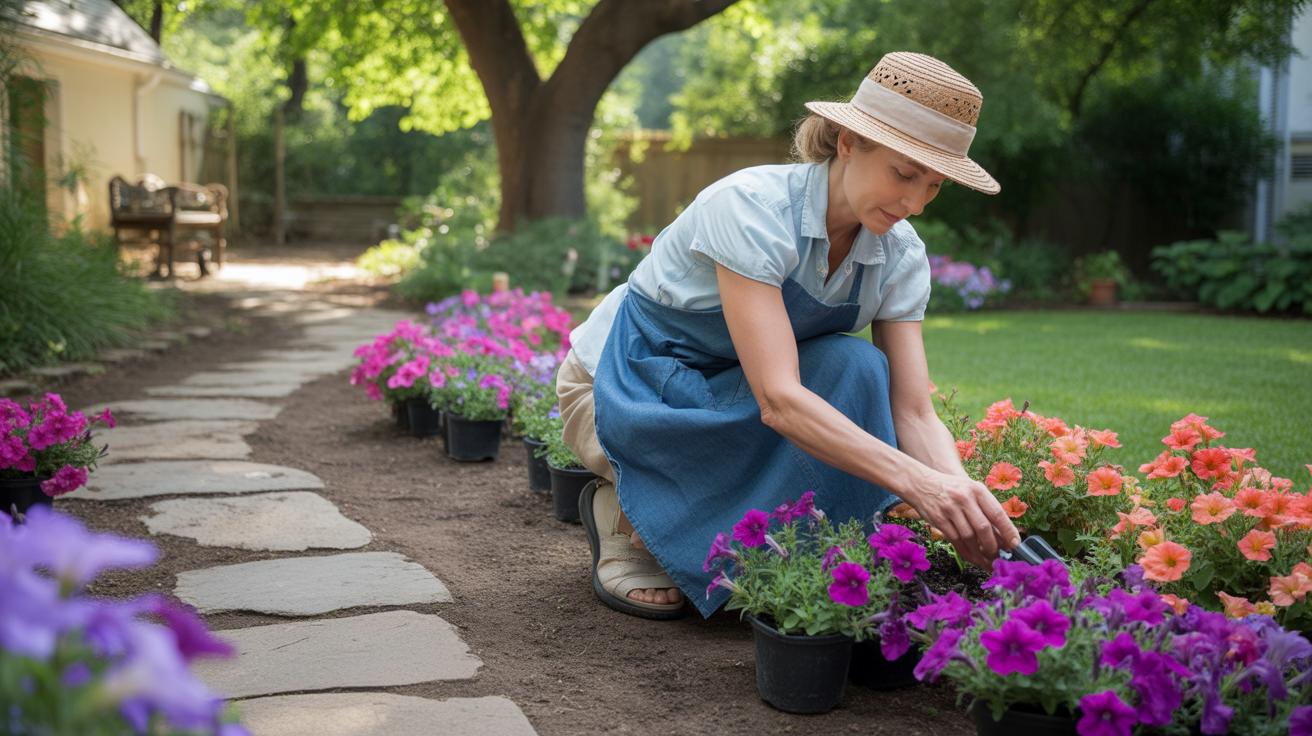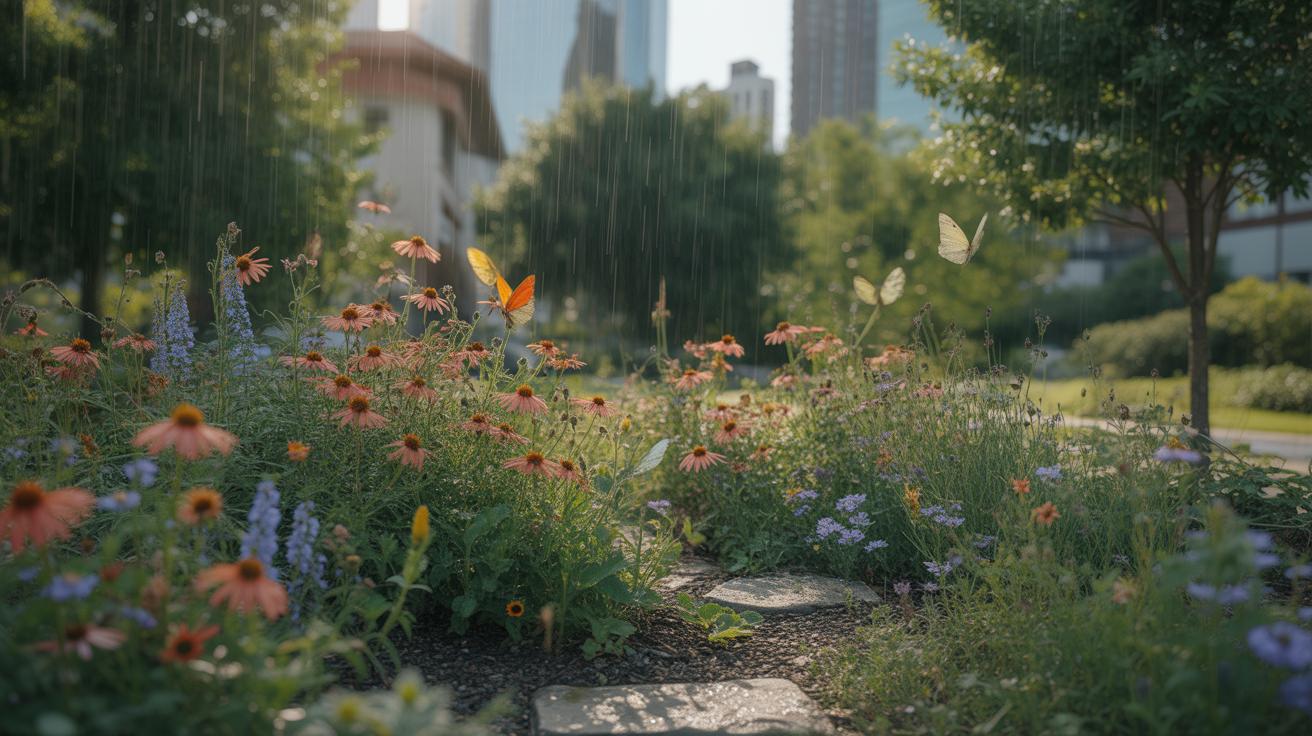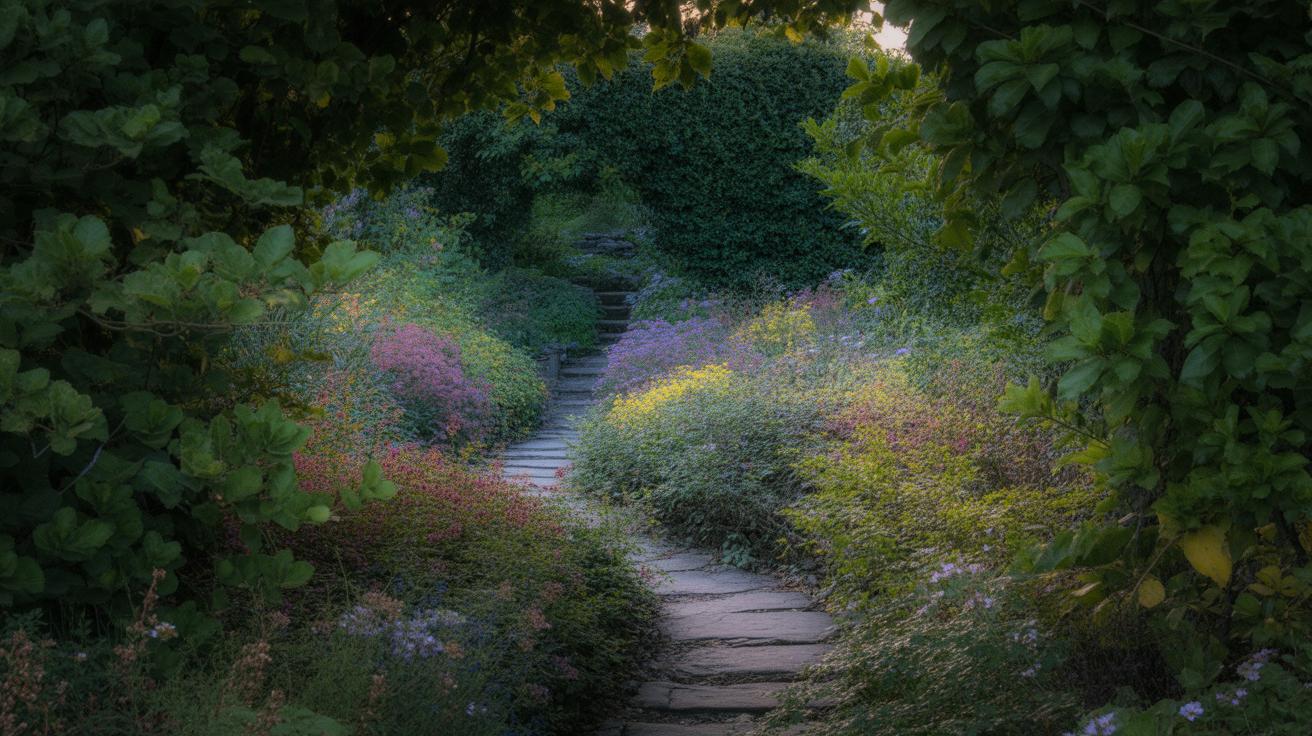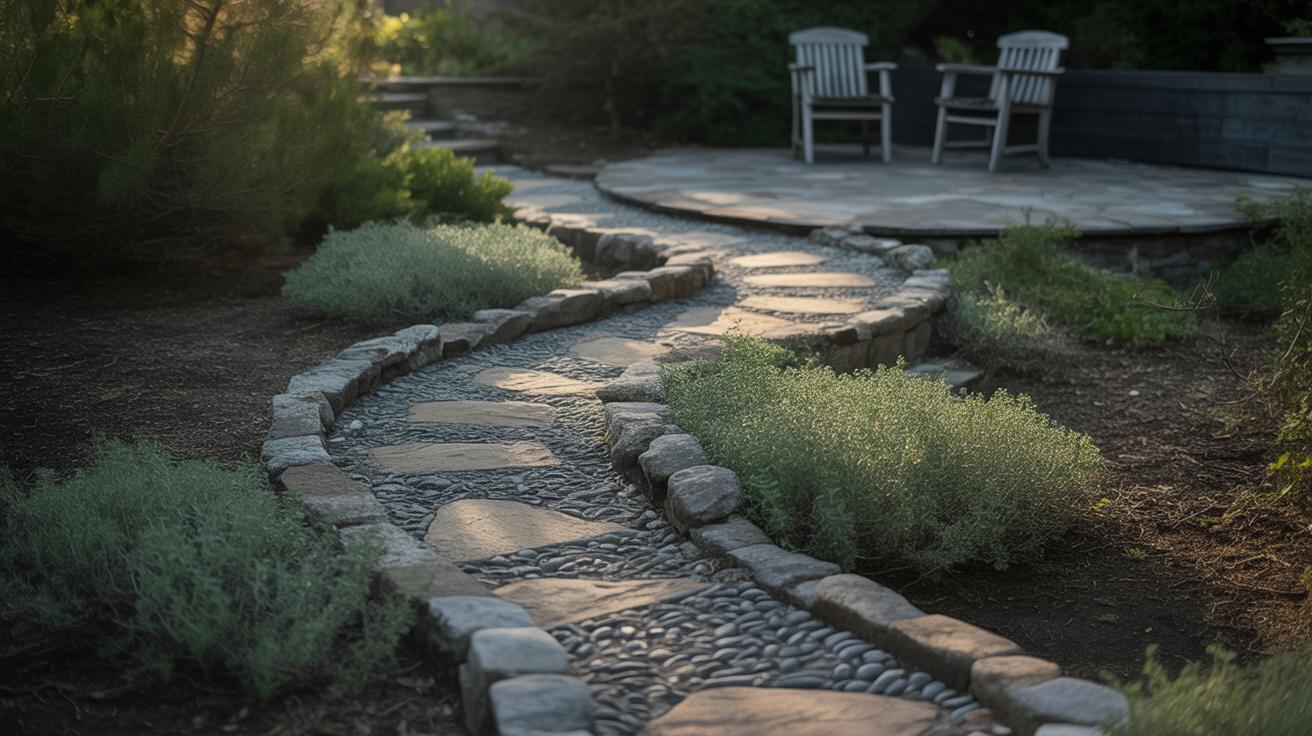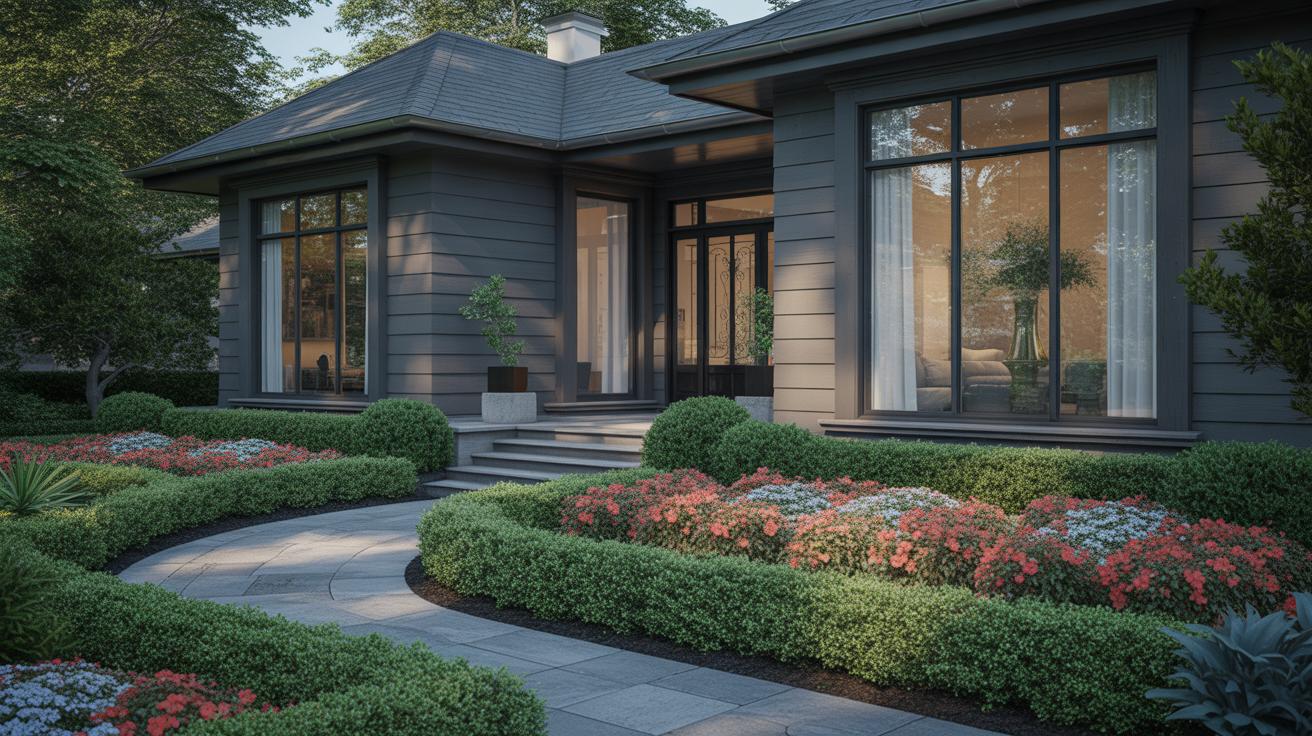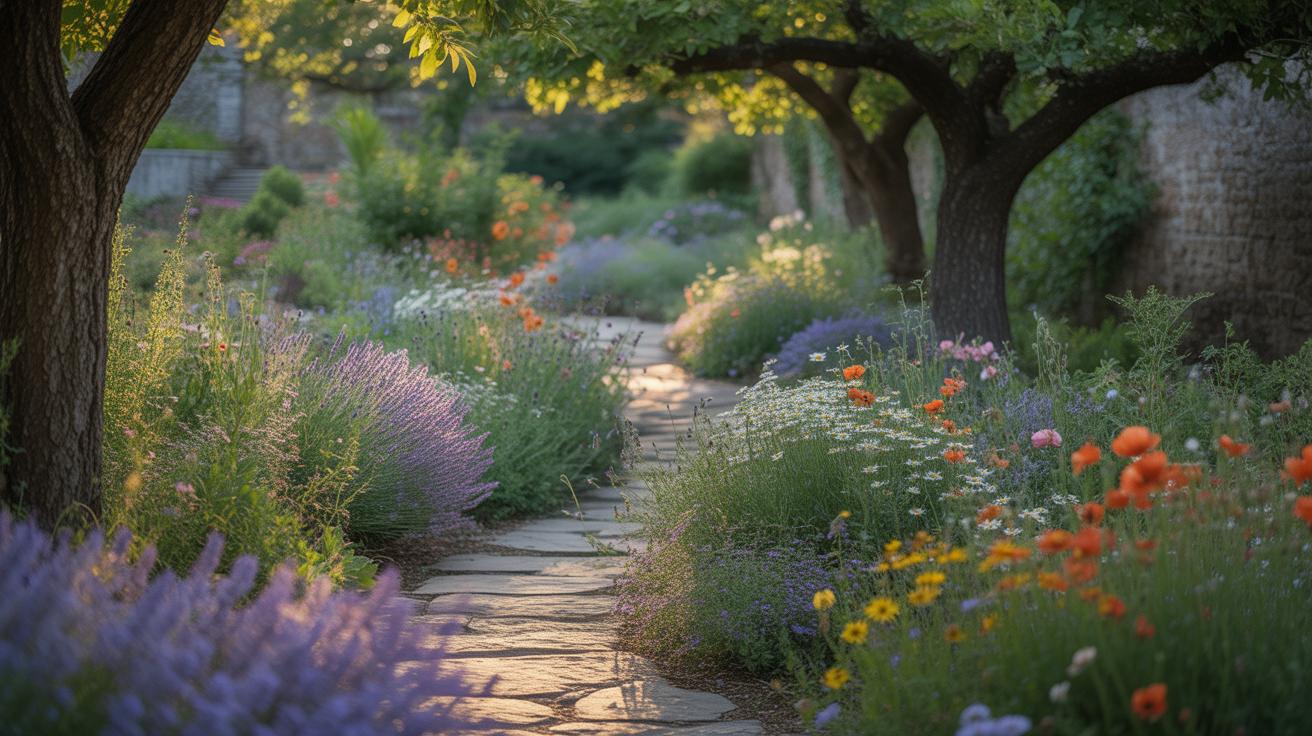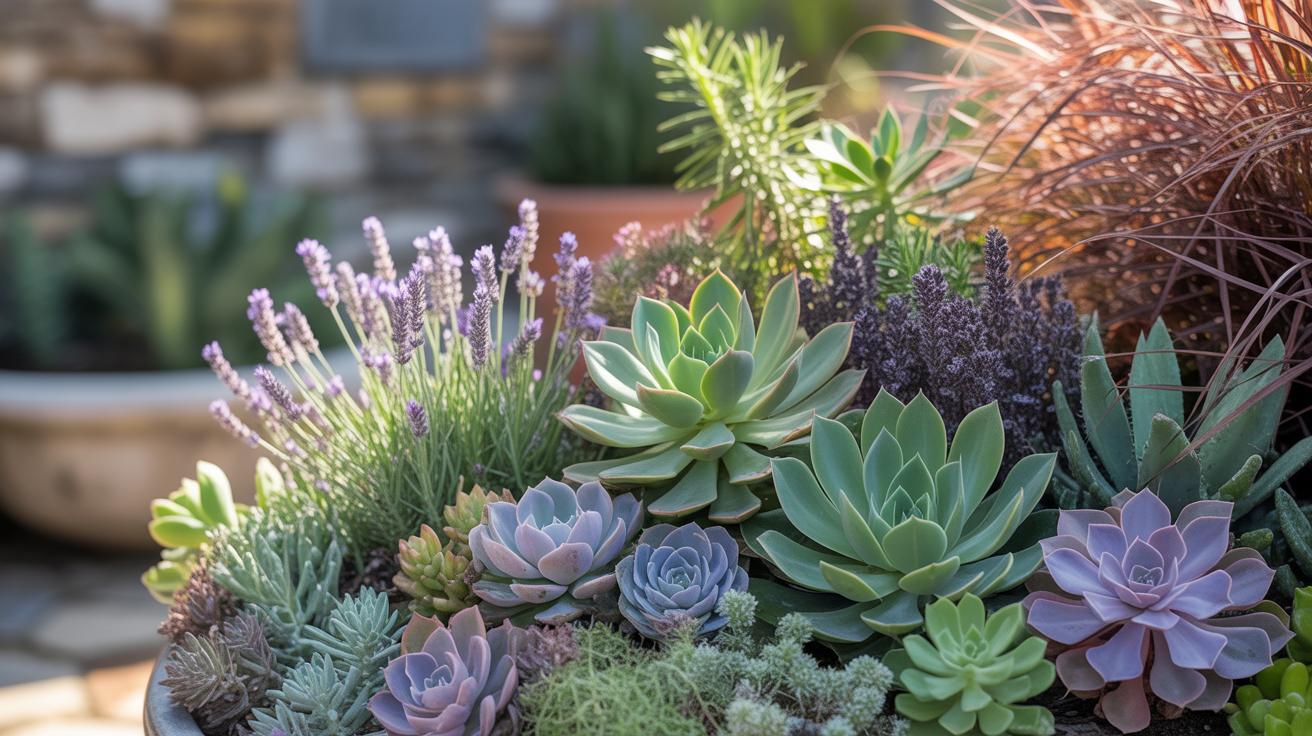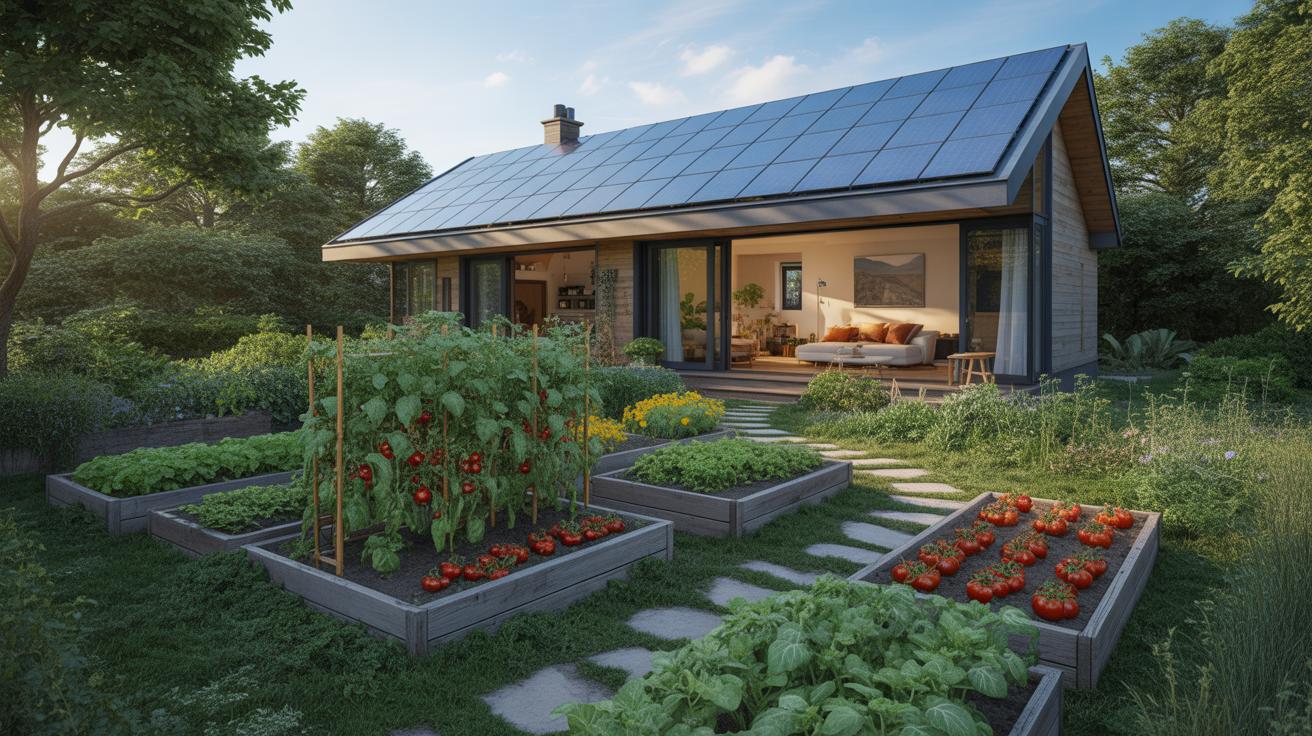Introduction
Dry gardens offer a unique way to create beautiful, low-maintenance outdoor spaces. They use rocks and gravel instead of large amounts of water and plants, making them practical and appealing for sustainable landscaping. This type of garden saves water, reduces chores, and can fit small or tricky spaces.
In this article, you’ll learn why dry gardens make sense for your home. We will explore key aspects like design ideas, benefits, care tips, and ways dry gardens support the environment. You’ll see how creating a dry garden can bring calm and simplicity to your yard while helping the planet.
What Is a Dry Garden
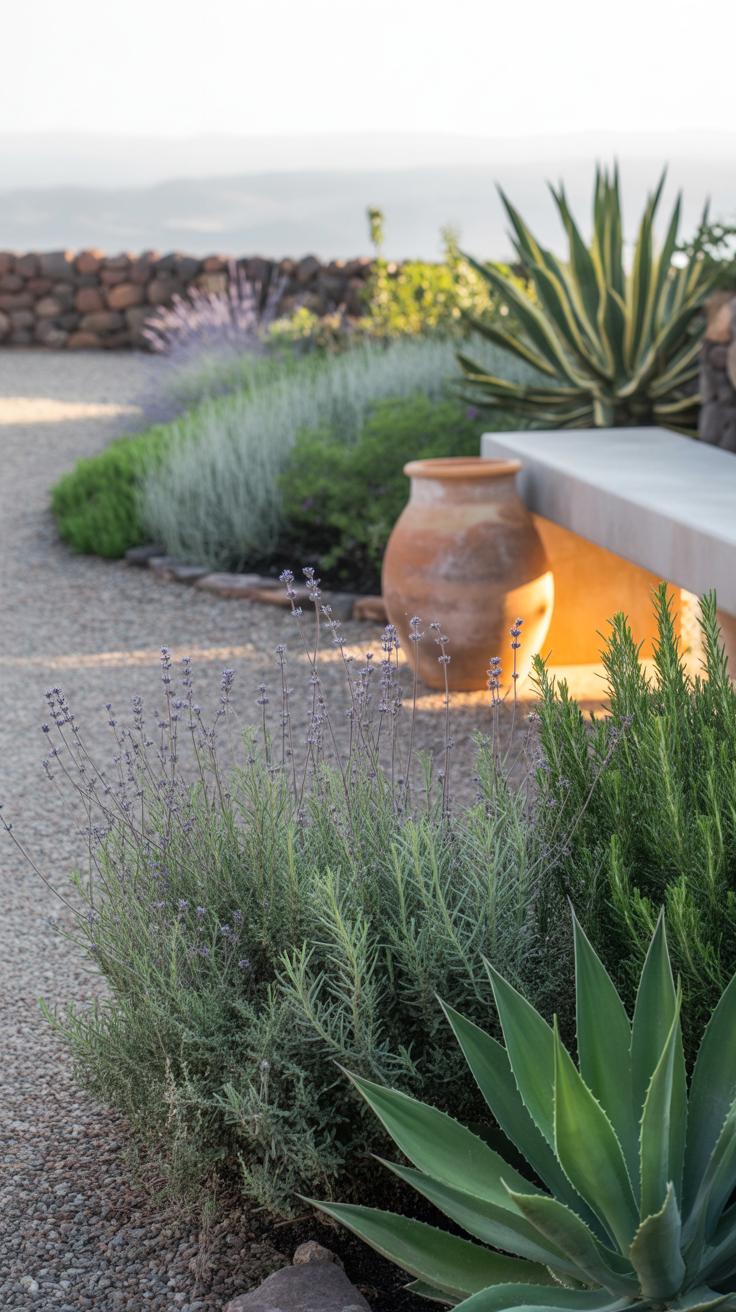 A dry garden is a type of garden designed to thrive without relying on frequent watering. Instead of lush lawns or water-loving plants, dry gardens focus on materials and plants that can handle dry conditions. You might picture a mix of rocks, gravel, sand, and sparse, hardy plants. These gardens often look minimalist; they don’t aim for density or color variety like traditional gardens do.
A dry garden is a type of garden designed to thrive without relying on frequent watering. Instead of lush lawns or water-loving plants, dry gardens focus on materials and plants that can handle dry conditions. You might picture a mix of rocks, gravel, sand, and sparse, hardy plants. These gardens often look minimalist; they don’t aim for density or color variety like traditional gardens do.
The key features include low-water plants such as succulents or drought-tolerant shrubs, an emphasis on textures over blooms, and a layout that incorporates natural elements like stones and bare earth. Unlike typical gardens, there’s less emphasis on grass or moisture-loving flowers. This type of garden asks a different question: how do you create beauty and interest when water is scarce? The answer lies in simplicity and restraint.
Origins and History
The oldest dry gardens probably come from arid regions, but one of the most famous influences is the Japanese rock garden, sometimes called a zen garden. These gardens date back hundreds of years and rely heavily on carefully placed rocks, gravel, and sand raked into patterns. They aren’t just about aesthetics though; they express ideas of meditation and natural balance.
Japanese dry gardens brought a deeper meaning to the concept, showing that gardens don’t need water or flowers to feel complete. This idea spread and evolved as more people looked for ways to garden in drier climates or with less maintenance. You might recognize elements of these ancient designs in modern dry gardens even if they don’t fully adopt the spiritual aspects.
Basic Elements
Most dry gardens contain a handful of simple materials that define their look and function. Rocks stand in as the main structural pieces. They add shape and can represent mountains or islands in a bare landscape. Sand or gravel often covers the ground, sometimes raked into patterns for texture or to suggest water.
Moss and small, resilient plants appear in patches but aren’t the focus. Plants tend to be slow-growing, tough ones that don’t demand much water or care. It’s common to see succulents, ornamental grasses, or even some native wildflowers here. The overall effect is quiet, controlled, and somewhat stark—not cluttered or overgrown.
Thinking about a dry garden might make you rethink what a garden needs to be. Can a space full of stones, sand, and just a few plants still feel alive and inviting? Many find that yes, it can—just in a more subdued way.
Water Savings and Efficiency
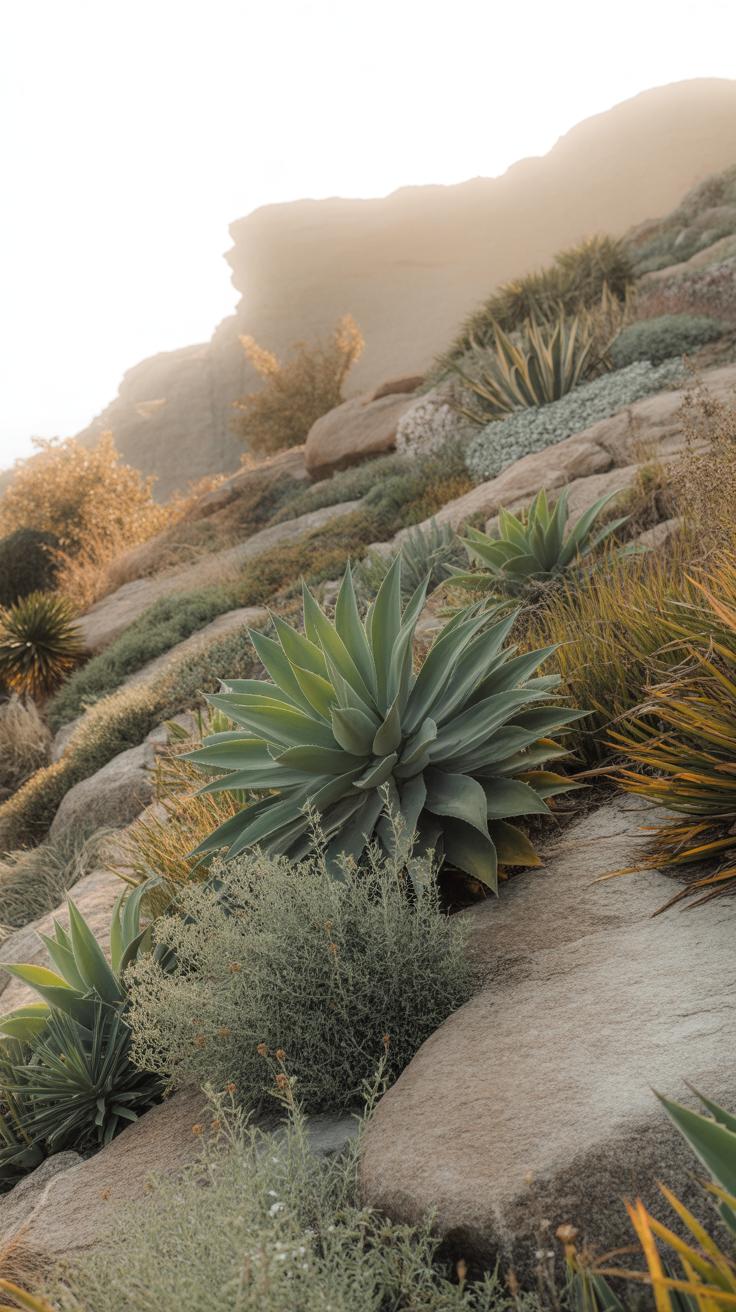
Reducing Water Use
Dry gardens typically rely on plants that thrive with minimal watering, which means you can skip regular irrigation altogether or at least cut it down dramatically. This isn’t just about convenience, though—it really helps conserve water, especially in areas where every drop counts. When you choose drought-tolerant plants and well-draining soil, your garden can maintain itself through natural rainfall much better than a conventional lawn or garden watered daily.
In my experience, it was surprising how quickly the water bill dropped after switching to a dry garden setup. You might wonder if the plants will struggle during dry spells, but many dry garden species have deep roots or adapt their metabolism to hold water more effectively. It’s not foolproof—some irrigation might be necessary during unusually long droughts—but overall, the demand on your water resources is far lower.
Environmental Impact
Saving water through dry gardening does more than just lessen your utility costs; it actually eases stress on local ecosystems that depend on that water too. Think about the energy it takes to pump, treat, and deliver water to homes. By using less, you lower the carbon footprint tied to that process. And since dry gardens often avoid chemical fertilizers and pesticides—because many drought-tolerant plants are naturally resistant—you reduce the chemical runoff that can pollute streams and harm wildlife.
Still, it’s tricky to say this approach is perfect for every spot or climate. Some regions might benefit more, while others might find a mix of strategies necessary. But even if your dry garden isn’t a complete swap from traditional watering, it’s a meaningful step toward sustainability. You might start to question how much water you really need, and that reflection itself can influence ways you care for the other parts of your outdoor space.
Designing Your Dry Garden
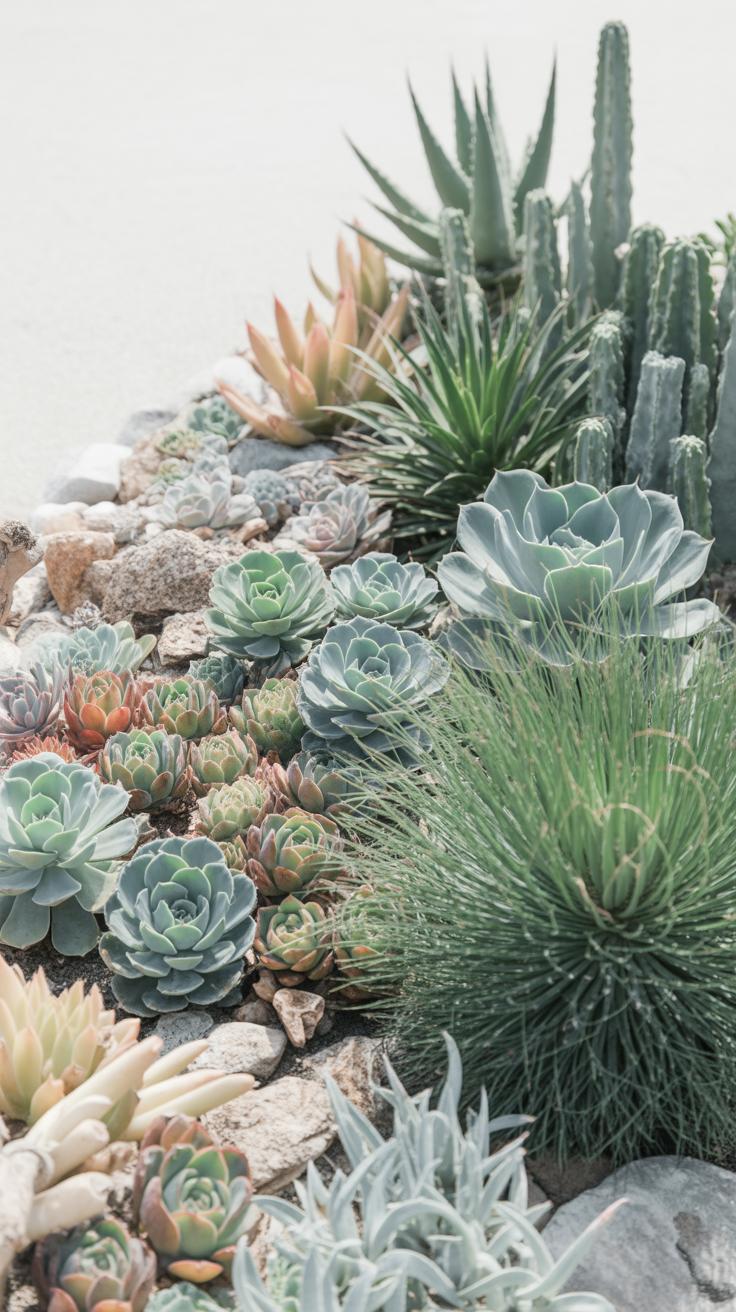 When setting out to design your dry garden, think of balance and simplicity as your main companions. You don’t need to fill every inch with stuff. Sometimes, less really feels like more—though not always perfectly, and that’s okay. The key is spacing elements so each piece stands out without crowding others. Too many rocks or plants can confuse the eye, but too few might feel empty or unfinished. Finding that middle ground takes a bit of trial and error, plus observing how things grow over time.
When setting out to design your dry garden, think of balance and simplicity as your main companions. You don’t need to fill every inch with stuff. Sometimes, less really feels like more—though not always perfectly, and that’s okay. The key is spacing elements so each piece stands out without crowding others. Too many rocks or plants can confuse the eye, but too few might feel empty or unfinished. Finding that middle ground takes a bit of trial and error, plus observing how things grow over time.
Choosing Materials
Pick rocks and gravel that match each other in tone and texture but don’t blend too much. If everything is too uniform, your garden might look a bit flat. Some rough, jagged stones next to smoother pebbles? That contrast adds interest. For gravel, aim for sizes that are comfortable to walk on yet visually appealing—somewhere between small and medium pebbles usually works well.
When it comes to plants, choose ones suited for dry conditions and give thought to their shape and color. Succulents, ornamental grasses, and drought-tolerant shrubs tend to be the go-to. But don’t just pick any dry-loving plant. The way a plant changes through the seasons or how it grows—clumps, spreads, or stays sculptural—affects the balance of the garden. You might hesitate on including a plant that can become wild, but a bit of unpredictability sometimes keeps the space lively.
Layout and Flow
Arrange your materials so they guide attention in a soft, natural way. A sweeping curve of gravel or a line of stones can lead the eye gently from one area to another. It’s tempting to use rigid, straight lines because they’re easy, but these can feel forced or too formal in a dry garden. Instead, try to layer different elements with varying heights and textures. Mixing ground covers with taller plants or stones gives depth.
Don’t stress if your layout isn’t perfectly symmetrical. Gardens that feel a bit “off” or unexpected tend to be more interesting. Try stepping back as you build and see where your gaze lands. Does your eye rest on something pleasing? Or does it bounce around, unsettled? Adjust accordingly, but don’t aim for perfection. Your dry garden should invite curiosity, not demand order.
Plant Choices for Dry Gardens
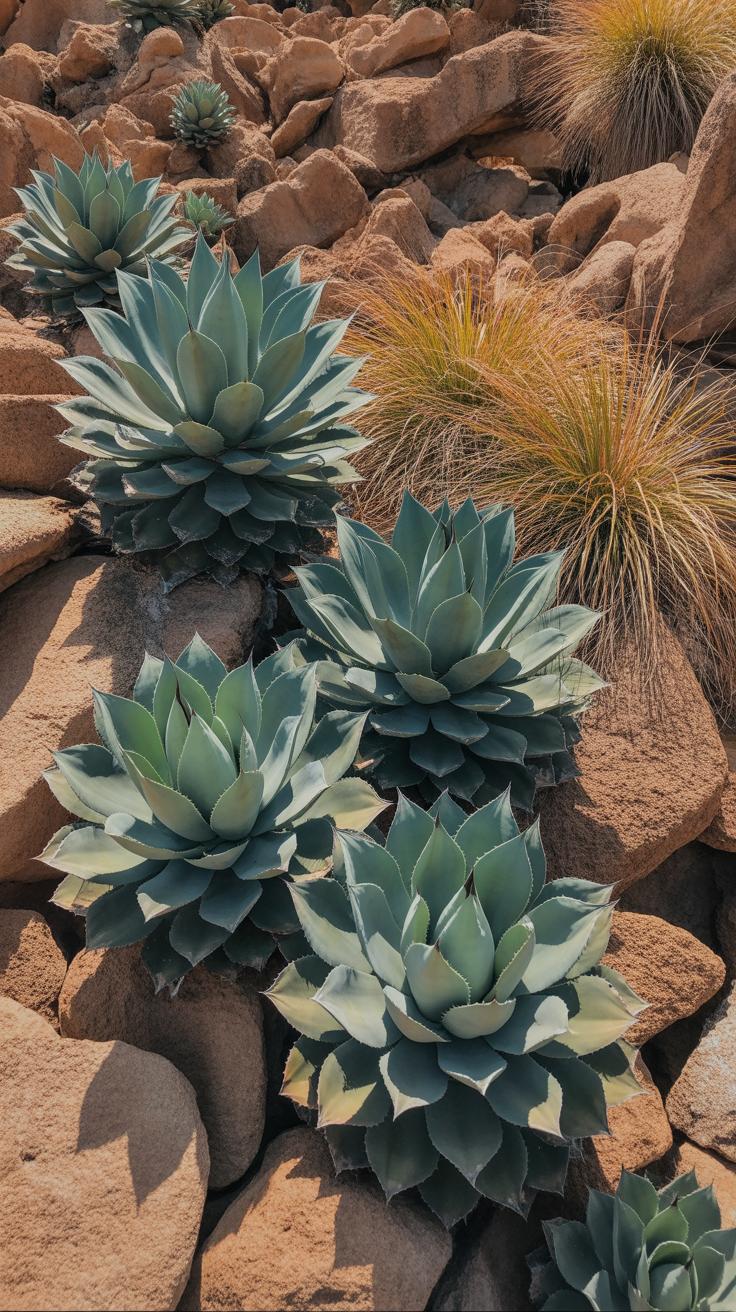
Choosing the right plants for a dry garden can make all the difference between a dull patch and a thriving space. You’ll want to pick species that not only survive but also add character without demanding much water. Some plants just seem to get along with heat and dryness better than others—there’s a bit of trial-and-error, but certain options reliably do well.
Drought-Tolerant Plants
Think about these kinds of plants:
- Succulents: Species like agave, echeveria, and sedum store water in their fleshy leaves. They’re pretty low-maintenance and come in a surprising variety of shapes and sizes.
- Lavender: Aside from the lovely scent, lavender handles dry soil nicely and brings a soft purple hue to your garden.
- Russian Sage (Perovskia): Has airy, silvery foliage and purple flowers. It’s almost like a wisp of color that doesn’t ask for much attention.
- Yarrow: Comes in yellows, reds, and whites. It’s resilient with fern-like foliage that adds interesting texture.
- Ornamental Grasses: Like blue fescue or feather grass, they provide movement and lighten up the space without needing extra water.
Often, these plants flourish if you plant them in loose, well-draining soil and avoid overwatering after the initial weeks. That can feel counterintuitive—like, shouldn’t watering be generous at first? But in dry gardens, too much water can cause more harm than good.
Creating Texture and Color
It’s tempting to fill a dry garden with only green and gray tones, but mixing things up really helps keep it interesting. Try layering plants with different textures—from spiky to soft, smooth to rough—and alternate heights to avoid monotony.
For example, pair the stiff leaves of agave with the feathery foliage of yarrow. Then, scatter patches of lavender to add color and scent. Even subtle color shifts, like silvery leaves against dark green, catch the eye over time.
You might wonder if that’s enough to sustain visual interest year-round. Well, drought-tolerant gardens can surprise you. Some plants bloom at strange times, while others change tones with the seasons. Waiting to see how your choices perform is part of the process, and honestly, sometimes the best combos come from unexpected pairings.
Maintaining Your Dry Garden
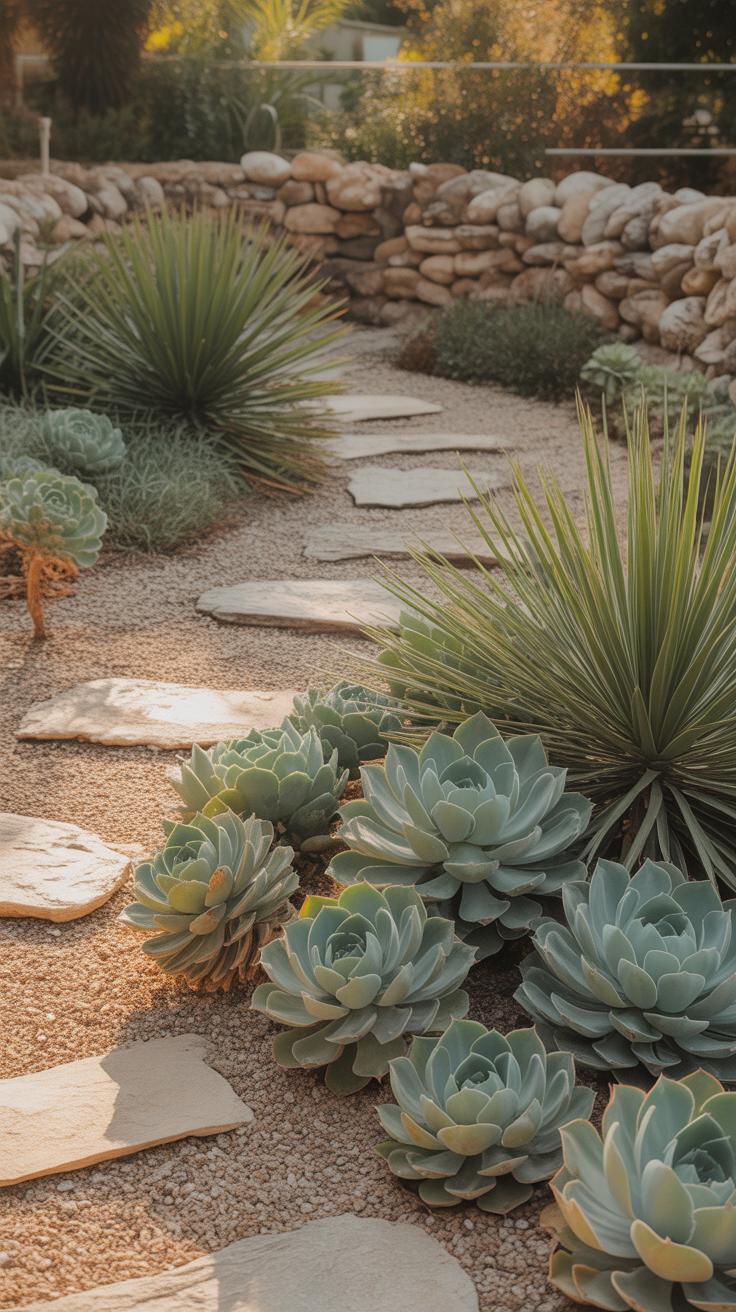
Caring for a dry garden might seem simple at first, but it does require a bit of attention to keep things looking their best over time. Routine cleaning plays a big role here. Removing fallen leaves, twigs, and other debris helps prevent mold or pests from taking hold. You might find that simply raking gravel or sweeping the paved areas once in a while can make a noticeable difference. And yes, even though dry gardens are meant to reduce unwanted growth, small weeds or invasive plants can pop up—pull them early before they spread.
Seasonal care means adjusting your approach throughout the year. For example, gravel or stone surfaces may need occasional smoothing or topping up, especially after winter rains or strong winds displace them. Pruning is another task that shifts with the seasons. Some drought-tolerant plants respond well to pruning in late winter, encouraging better shape and growth in spring, though others prefer to be left alone a bit longer. I find this part tricky sometimes—knowing whether to prune now or wait can depend on the specific plant, or honestly, just how much time I have.
Do you notice parts of your dry garden looking patchy or less tidy after a season? Sometimes, rearranging elements like stones or adjusting plant placement can revive the space without much fuss. Dry gardens aren’t zero maintenance; they need occasional human care, but often less than traditional gardens. The odd spot that needs a little fixing here or there is quite normal—perhaps even expected. The key, I think, is keeping an eye on things so issues don’t sneak up on you.
Benefits Beyond Beauty
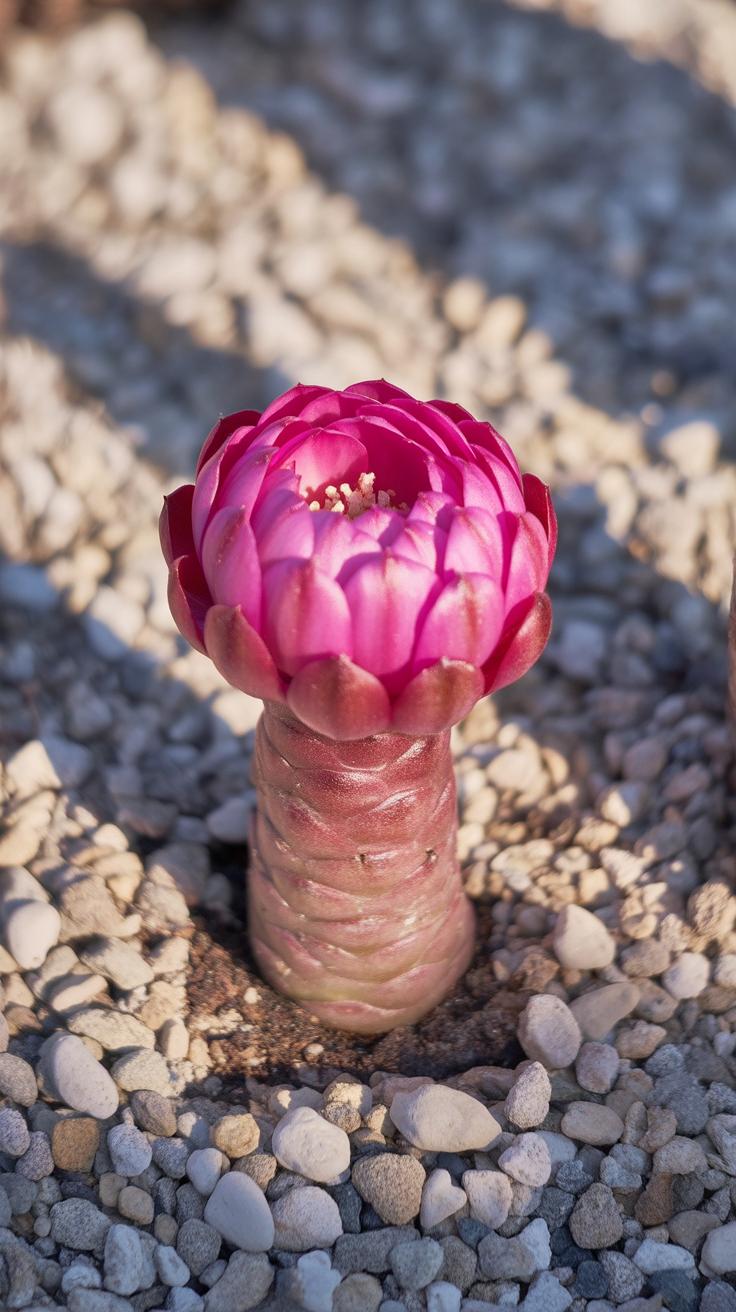
Dry gardens offer more than just a visually pleasing space. They quietly contribute to the environment in ways that might not be immediately obvious. For one, these gardens can help reduce water runoff, which often carries pollutants into nearby streams or ponds. This means your garden isn’t just sitting pretty—it’s actually making a difference in local water quality.
Mentally, there’s something calming about dry gardens. The simplicity and natural textures invite a sort of quiet reflection. Spending time in such spaces can ease stress, giving you a break from the noise and rush of daily life. Maybe it’s the muted colors or the sound of wind through drought-tolerant plants—whatever it is, it often feels like a subtle reset for the mind.
Wildlife Friendly
You might not realize just how many creatures dry gardens attract. They tend to support specific insects and animals that are adapted to arid conditions. Pollinators like bees and certain butterflies find these spaces useful, as they often host native flowering plants rich in nectar. Also, some birds prefer dry gardens because they offer shelter without dense foliage attracting predators.
In my experience, watching small lizards darting among stones and plants is surprisingly satisfying. These gardens create microhabitats that can support biodiversity, even outside of wetter or heavily planted areas. So, by choosing dry gardens, you might be contributing to local ecosystems in ways you wouldn’t expect.
Stress Reduction
Stepping into a dry garden often brings a feeling of peace. The space doesn’t overwhelm you but invites a quieter kind of attention. It’s easy to sit for a few moments and just breathe without distractions. For some people, this fosters a kind of mindfulness that’s hard to find elsewhere.
Interestingly, because dry gardens aren’t cluttered with busy flowers or thick grass, your focus narrows naturally. You begin noticing textures—the roughness of a stone or the subtle sway of a dry grass blade. This can help ground your thoughts, making the garden a simple but effective tool for mental relief.
Do you find your mind wandering or that quiet moments seem scarce? A dry garden might just offer a gentle space to slow down. It’s not a cure-all, but it has helped me—and others I know—find a few moments of calm during hectic days.
Cost and Resource Savings
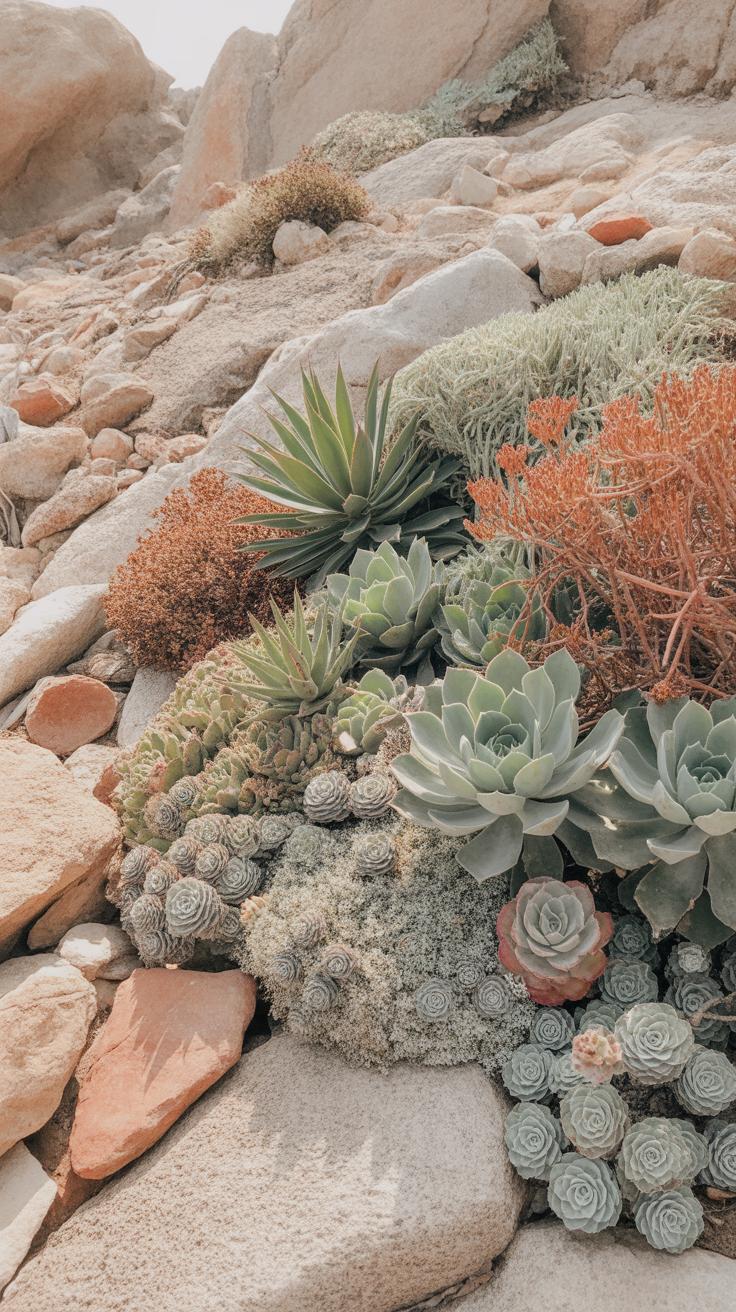
Initial Costs
Starting a dry garden often feels like a smart choice if you’re watching your budget. The materials — gravel, rocks, drought-tolerant plants — usually come at a reasonable price compared to traditional lawns or water-dependent gardens. You might need some soil amendments or a simple irrigation setup, but overall, installation costs tend to stay moderate. Of course, this depends on scale and design complexity; a minimalist dry garden costs less than a fully landscaped one. Still, you’re not paying for constant sprinkler systems or fancy outdoor water features, and that can quickly add up to noticeable savings.
Now, if you hire someone to install your garden, labor might push the price up. But I think most people find that upfront spending for materials doesn’t shock the wallet too much, especially when factoring what water bills will drop to later on.
Long Term Savings
What really matters, though, is what you save over time. Dry gardens cut water use dramatically, which shows up in smaller water bills every month. That’s a relief come summer, when watering a traditional garden can feel like paying a second utility bill. Plus, plants suited for dry gardens need less fussing — less trimming, fewer applications of fertilizer or pesticides.
Maintenance becomes easier and less frequent. You’re not chasing after a dead lawn or dealing with soggy soil issues. This means fewer gardening tools or hired caretakers. Sometimes, it feels like the garden is doing the work itself, quietly, with less interference.
So, while the investment in a dry garden may not be free, the ongoing cost — money and time — tends to shrink, which can be pretty appealing if you’re trying to keep expenses in check without sacrificing a nice outdoor space. It makes you wonder why more people don’t consider this option sooner.
Creating a Meditative Space
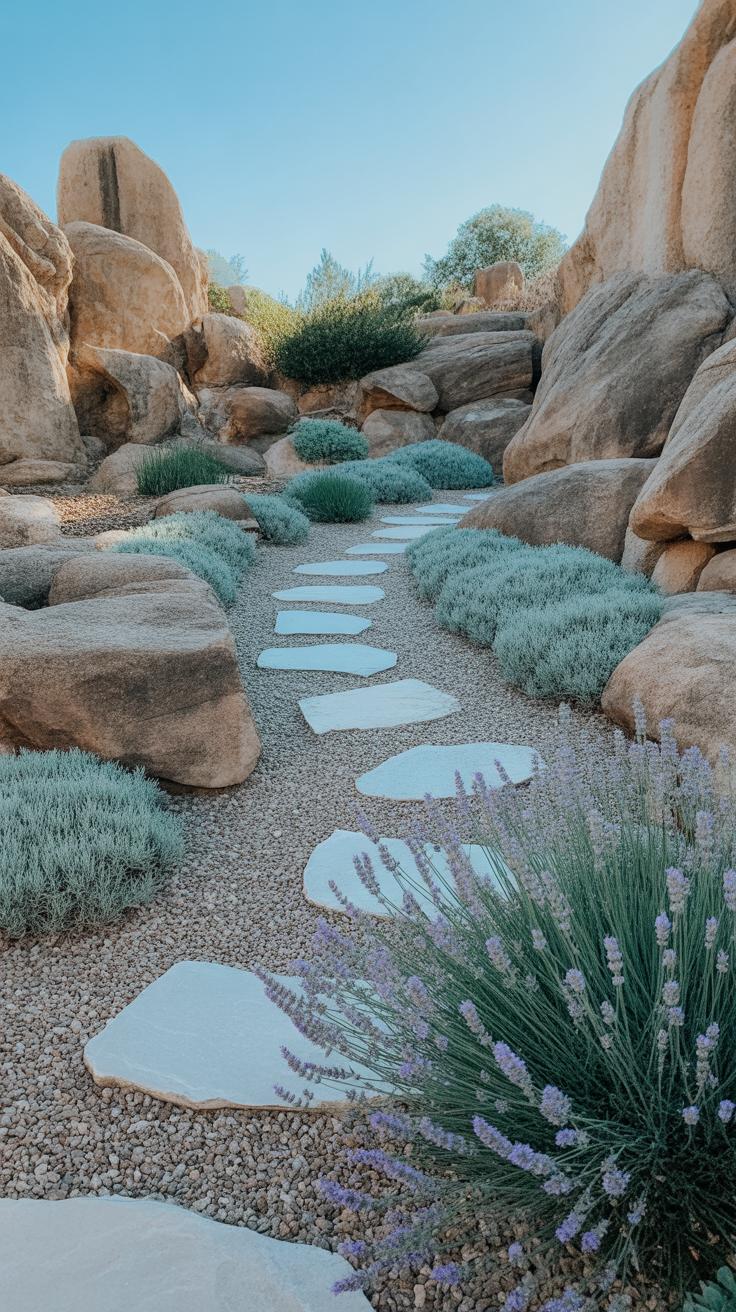
Your dry garden can become more than just a practical outdoor area—it can be a quiet retreat for meditation and reflection. Designing it with calm in mind means paying attention to simplicity and subtle details that encourage stillness. For example, placing a single bench under a gently swaying plant or near a smooth stone invites you to pause. Sometimes, it’s the small things: the crunch of gravel underfoot or the soft trickle of a tiny, drought-tolerant fountain that draws you in.
Drawing inspiration from Zen gardens offers a clear path to peace. These gardens emphasize minimalism, featuring carefully raked gravel, sparse plantings, and natural elements arranged thoughtfully. Their layout is not cluttered; instead, space itself becomes part of the design. You don’t need to copy exactly, but embracing this restrained style helps avoid distractions and fosters a mindset of calm observation.
Here are some simple ideas to make your dry garden more meditative:
- Add a low bench or a flat stone for seating—something comfortable but not imposing.
- Incorporate gentle pathways made with decomposed granite or smooth pavers to encourage slow, mindful walking.
- Include subtle art pieces, like a small sculpted rock or bamboo wind chimes, that don’t shout but quietly catch the eye.
It’s tempting to fill every corner, but sometimes less really is more when your goal is peace. Would you find it easier to reflect in a space that feels open and uncluttered? Thinking about how your senses interact with the garden can be surprisingly helpful in crafting a meditative spot.
Common Mistakes to Avoid
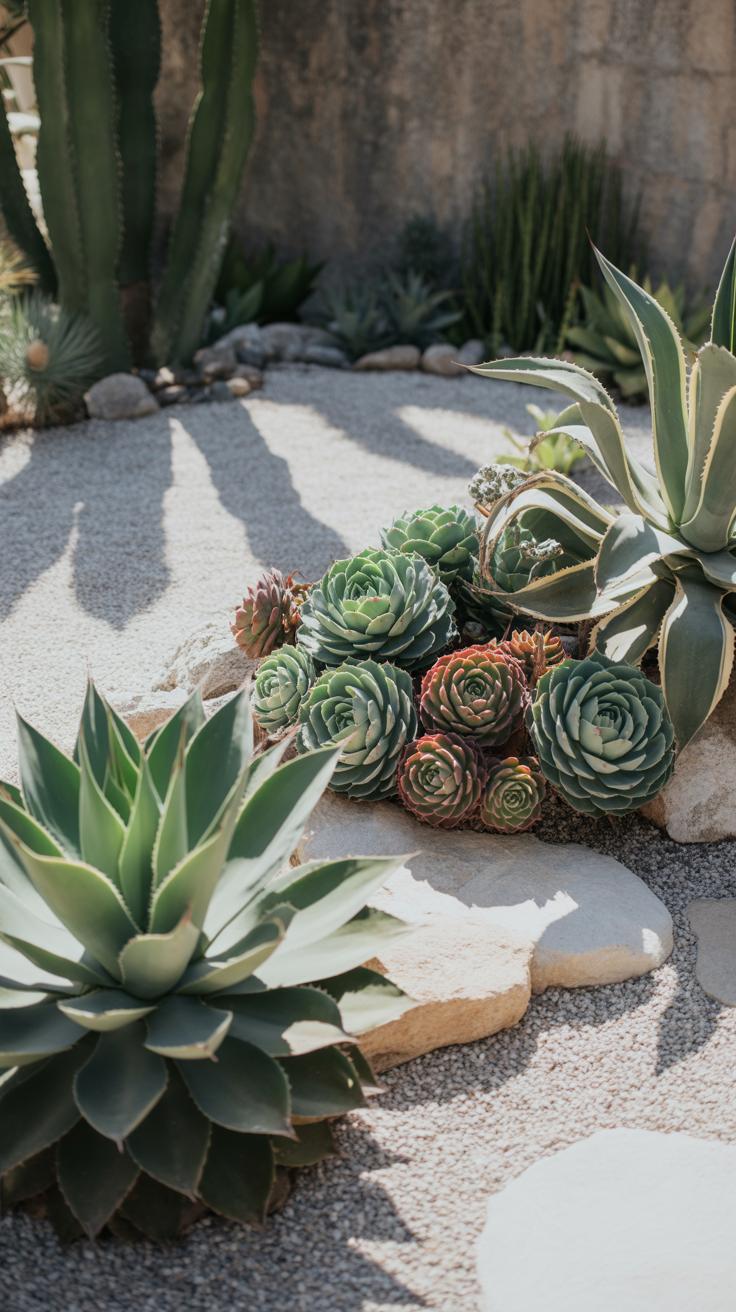
Poor Material Choices
Picking the wrong rocks or plants can really throw off your dry garden. Some rocks might seem like a good fit but end up trapping water or looking out of place. For example, flat stones that hold moisture can encourage moss where you don’t want it. Instead, go for rough, porous rocks like granite or or lava rock. They drain well and age nicely.
Plants are another tricky part. Some species demand more water than you realize, so they struggle in a dry garden setup. Succulents and drought-resistant natives usually work best. Avoid something that looks tough but secretly needs regular watering, like many ferns or lilies. It’s easy to be deceived by a plant’s hardiness at first glance.
Choosing the right materials means paying attention to how they behave over time. Would you rather fix it once or redo half your garden later? I’ve learned the hard way that first impressions can be misleading.
Neglecting Maintenance
It might seem like dry gardens need almost no upkeep, but that’s not quite true. Without regular care, weeds sneak in. Loose debris piles up, and plants may start to look tired. A dry garden doesn’t mean “set it and forget it.” It’s more like low-effort rather than no effort.
Simple steps like occasional weeding, pruning, and rearranging stones can make a huge difference. Also, checking your plants helps catch problems early before they get out of hand. I once ignored a small patch of weeds thinking it was harmless, only to spend half a day pulling out stubborn roots later. That taught me that skipping maintenance doesn’t save time—you just pay for it in frustration.
Regular attention keeps your garden clean and healthy without much hassle. It’s not a chore if you do it little by little and notice the improvements yourself.
Starting Your Dry Garden Project
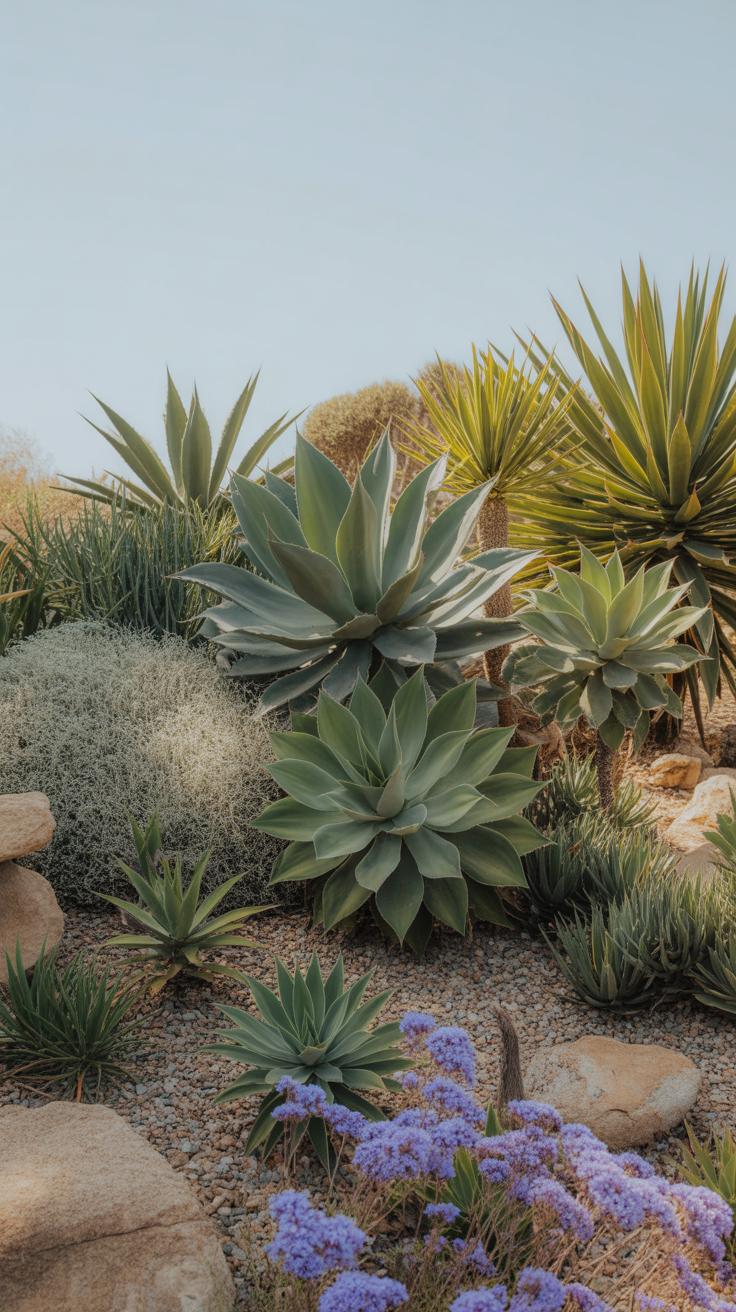
Planning Your Space
Begin by taking a good look at the area you want to transform. Measure carefully—length, width, and even the slopes or uneven parts that might affect water flow. Sketch out a rough layout, imagining where plants and features will go. Don’t worry if your drawing looks messy; sometimes ideas evolve better when they’re raw.
Think about sun exposure, too. Some spots might get intense midday sun, while others stay shaded. This will influence your plant choices later. You might want a mix of textures and heights, so try visualizing how plants will grow over time. Of course, you can always rearrange things as you go, but having a plan helps prevent costly mistakes.
Gathering Supplies
Next up, gather what you need. Dry gardens often rely on gravel, stones, and drought-tolerant plants. You can find most materials at local garden centers or specialty nurseries focused on native or xeric plants. Sometimes, it’s worthwhile to check builders’ yards or landscaping firms for surplus rocks or gravel—they might offer better prices or unusual materials.
Before snapping up bags of gravel or buying plants, consider starting small. Collecting soil samples to check drainage can save hassle. When it comes to tools, basic garden equipment usually suffices—think shovels, rakes, and gloves. Preparing the ground might require removing grass or existing plants, so plan for disposal as well. The key is starting simply, then building your garden bit by bit, learning as you go.
Conclusions
Dry gardens save water and cut down on upkeep while adding calm beauty to your space. Their simple design helps you enjoy nature without much work. You can create a peaceful spot for meditation or decoration that fits your style and space.
Choosing a dry garden supports sustainable living and shows care for the environment. You can make smart choices about plants and materials that keep your garden thriving with less waste. Start your dry garden and enjoy its benefits every day.


